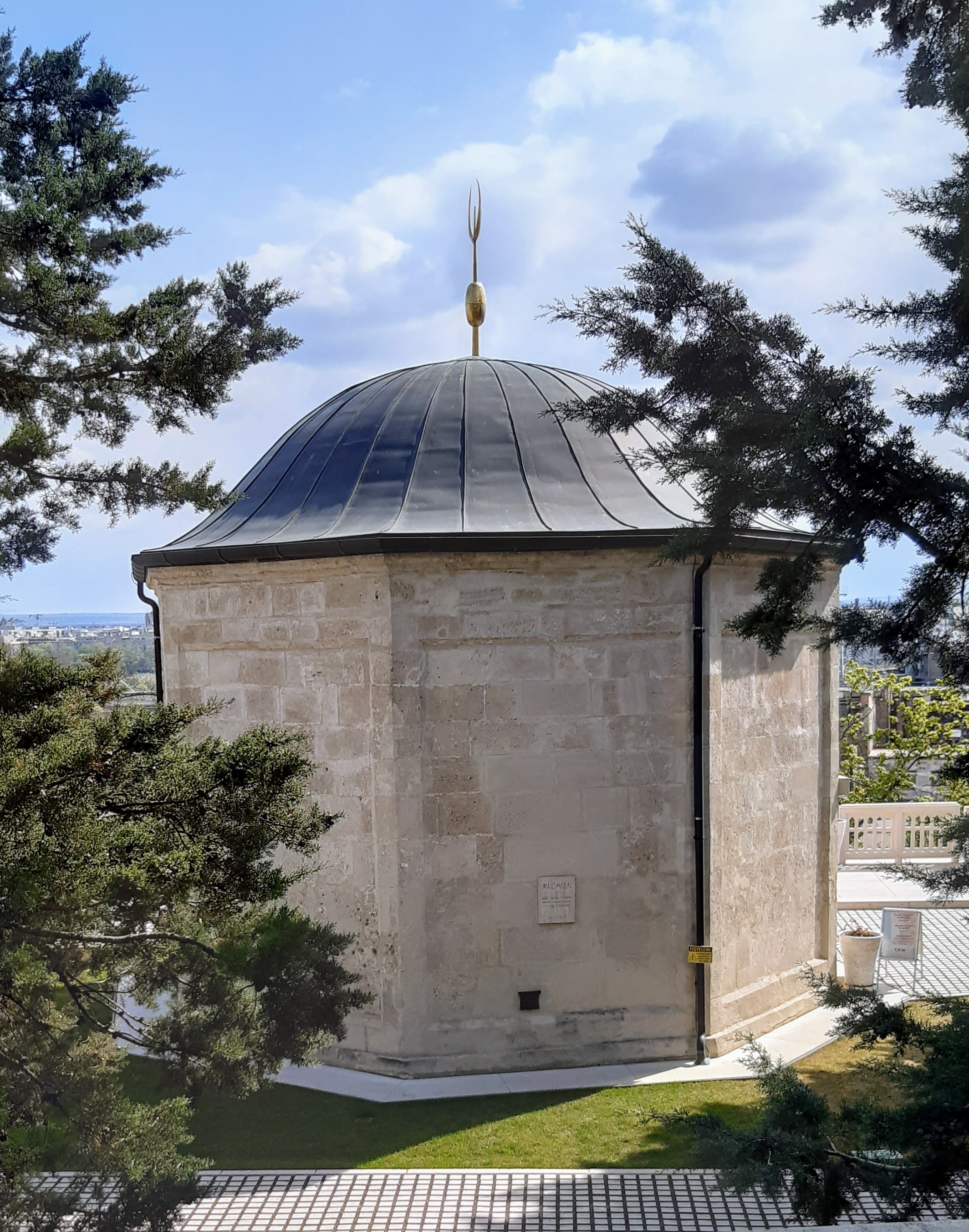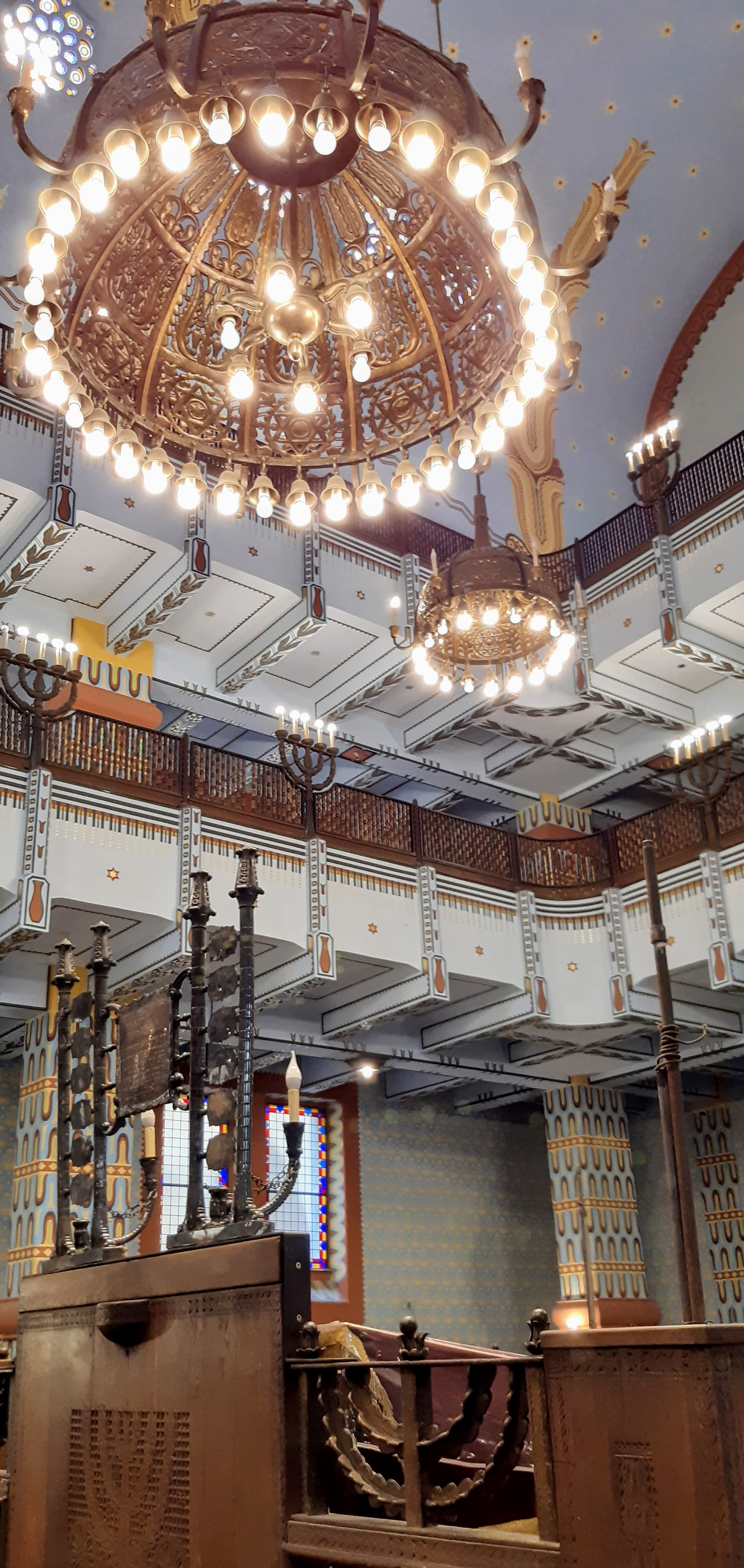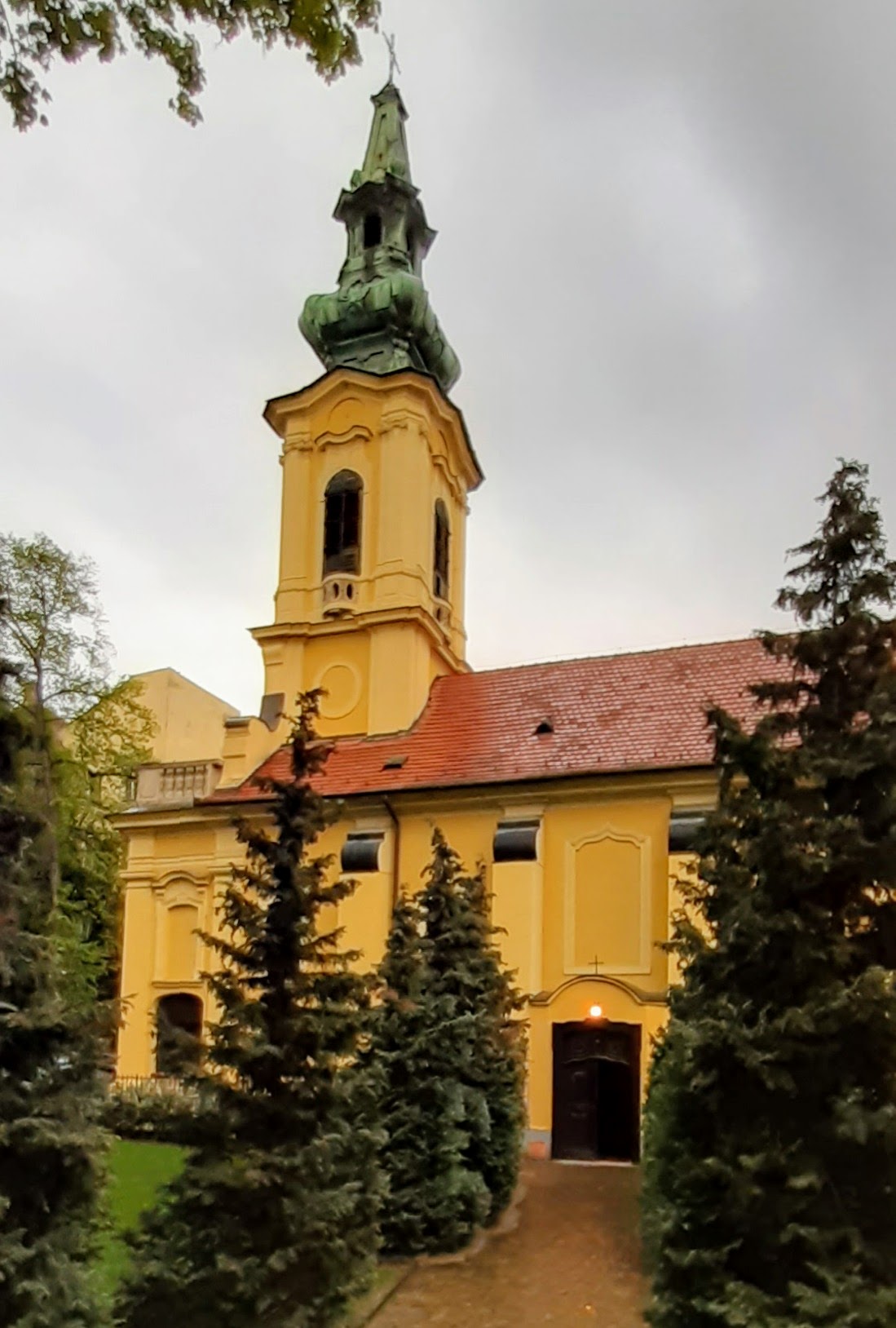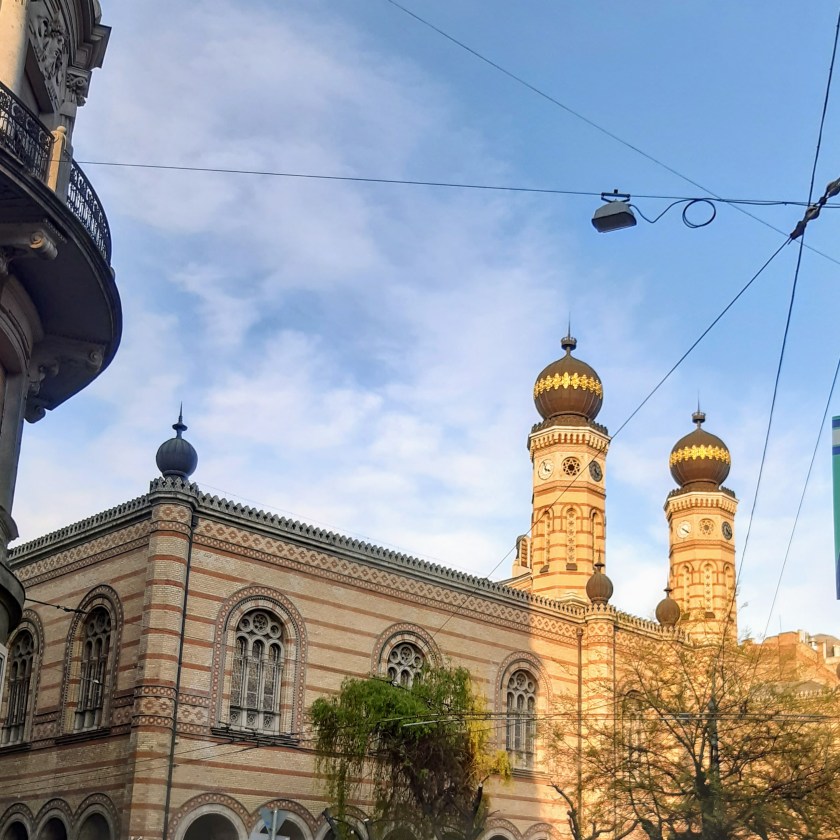Città vivace e affascinante, ricca di splendide architetture di inizio novecento ma decisamente poco spirituale, almeno nelle apparenze, Budapest nasconde una molteplicità di luoghi di culto non comune a testimonianza di un passato cosmopolita. Anche se la geografia religiosa di Budapest identifica sostanzialmente una città cattolica, e non potrebbe essere diversamente essendo stata per secoli sotto la dominazione asburgica, qua e là lascia spazio alla presenza di chiese riformate luterane e soprattutto calviniste, perché proprio l’Ungheria, e in particolare la città di Debrecen, furono e sono tutt’ora le roccaforti orientali della riforma nata a Ginevra e diffusasi poi soprattuto nel Nord Europa. Ci sono anche, a testimonianza dei costanti rapporti che l’Ungheria tenne con il mondo balcanico, due chiese barocche riservate alla comunità cristiano ortodossa, la Chiesa Greca e quella Serba.
Notevole sia dal punto di vista qualitativo che da quello storico è però la presenza ebraica perché, prima delle deportazioni di epoca nazista, Budapest aveva una delle comunità più grandi in Europa e un gran numero di sinagoghe di cui tre sono ancora visitabili. Infine come ricordo della lunga occupazione turca le cui tracce sono state cancellate dopo la riconquista asburgica, sopravvive, in un angolo discreto e affascinante della città, un mausoleo dedicato a un santo musulmano.
Ecco quindi un itinerario che tocca cinque luoghi di fede sparsi nella capitale ungherese. Percorrendolo a piedi misura circa 9 chilometri ma, per chi non è un gran camminatore, Budapest offre convenienti soluzioni di biglietto giornaliero, valido per tutti i mezzi, con cui è possibile raggiungere tutte le mete indicate.
A lively and intriguing city, full of magnificent early 20th-century architecture but definitely not very spiritual, at least in its looks, Budapest hides an uncommon array of worship sites attesting to its cosmopolitan past. Although Budapest’s religious geography essentially identifies it as a Catholic city, and it could not be otherwise, having been under Habsburg domination for centuries, here and there it leaves room for the presence of Lutheran and especially Calvinist reformed churches, because Hungary, and particular, the city of Debrecen, were and still are the eastern strongholds of this reform born in Geneva and then spread mainly in northern Europe. As evidence of Hungary’s constant relations with the Balkan world, there are also two Baroque churches reserved for the Christian Orthodox community, the Greek and Serbian churches.
However, the Jewish presence is remarkable from both a qualitative and historical point of view, as before the Nazi deportations, Budapest had one of the largest communities in Europe and a large number of synagogues, three of which can still be visited.
Last but not least, as a reminder of the long Turkish occupation, the remains of which were erased after the Habsburg reconquest, a mausoleum dedicated to a Muslim saint survives in a discreet and fascinating corner of the city.
Here, an itinerary through five places of worship in the Hungarian capital. It is about 9 kilometers long on foot, but for non-walkers, Budapest offers convenient one-day ticket solutions, valid for all public transport, to reach all the destinations indicated.

Il tempio nella Roccia (Sziklakapolna)
Anche se altri luoghi di culto cattolici possono vantare una maggior fama e imponenza (la grande e gelida Basilica di Santo Stefano o la bella Chiesa di Mattia nella città alta, sicuramente le più visitate dai turisti) voglio iniziare il mio percorso da questo bizzarro luogo d culto che si può raggiungere attraversando il magnifico Ponte dell Libertà (Szabadság híd), gioiello Art Nouveau. La maggior parte dei visitatori, una volta passato il ponte, rende omaggio al grande complesso termale Gellert che si trova proprio sull’altro lato della strada, per cui il sito religioso è abbastanza tranquillo. Il luogo originario dell’ordine monastico dei Paolini è sicuramente affascinante, anche se la discutibile scelta di abbinare al biglietto di ingresso delle cuffie con spiegazione dei vari luoghi rende il tutto fin troppo museale, attenuando la potenzialità mistica che la chiesa scavata nella roccia potrebbe offrire con i suoi punti di vista eccentrici. Nella chiesa noterete un costante riferimento alla Polonia perché a questo ordine è affidata la cura del Santuario di Czestochowa.
The Temple in the Rock (Sziklakapolna)
Although other Catholic sites can claim greater fame and grandeur (the large, freezing St Stephen’s Basilica or the pretty Matthias Church in the Upper Town, definitely the most popular with tourists) I should like to start my tour from this unusual place of worship, accessible by crossing the gorgeous Art Nouveau jewel Bridge of Liberty (Szabadság híd). The majority of visitors once crossed the bridge, pay homage to the large Gellert spa complex which is just across the road, so the religious site is fairly quiet. The original site of the Pauline monastic order is certainly fascinating, although the questionable choice of combining the entrance ticket with headphones with explanations of the various sites makes it all too museum-like, diminishing the mystical potential that the rock-hewn church could offer with its eccentric viewpoints. In the church, you will notice a permanent link to Poland, as this order is entrusted with the care of the Sanctuary of Czestochowa.

Il mausoleo di Gül Baba (Gül Baba Türbe és Rózsakert)
Dalla Chiesa nella Roccia, procedendo sulla riva del Danubio, si può salire alla città alta di Buda (vi si trovano il Palazzo Reale, la Galleria Nazionale e la Chiesa di Mattia, anch’essa ormai praticamente un museo) oppure seguire il fiume e percorrere la Fö utca passando per la neogotica Chiesa Calvinista di Buda, spesso chiusa, e la bella chiesa parrocchiale di Sant’Anna. Da qui al Mausoleo il percorso è meno interessante e lo si potrebbe compiere utilizzando un mezzo. Più a nord, proprio di fronte all’arrivo dela Ponte Margherita, il più settentrionale tra i quattro ponti monumentali di Budpaest, si raggiunge uno strano angolo di città in cui si respira ancora una vaga atmosfera ottomana. Circondato da bellissimi giardini, recentemente resaturati con un gusto e una precisione scandinava, sorge il Türbe (Tomba) del santo musulmano Gül Baba (il padre delle Rose) miracolosamente rimasto intatto dopo la totale cancelazione della presenza turca in seguito alla Battaglia di Mohacs avvenuta nel 1687 . Grazie a finanziamenti turchi il mausoleo è oggi un centro culturale e religioso (sia per la piccola comunità locale ma soprattuto per pellegrini) preceduto da un piccolo cimitero che ricorda alcuni angoli di Istanbul.
The Mausoleum of Gül Baba (Gül Baba Türbe és Rózsakert)
Starting from the Church on the Rock and proceeding along the banks of the Danube, you can either walk up to the Upper Town of Buda (where you’ll find the Royal Palace, the National Gallery, and Matthias Church, now mostly a museum) or follow the river and walk along Fö utca via the neo-Gothic Buda Calvinist Church, often closed and the beautiful parish church of St. Anne. From here to the Mausoleum the route is not so interesting and could be done by bus. Further north, just opposite the approach to Margaret Bridge, the northernmost of Budapest’s four monumental bridges, you reach a peculiar corner of the city where you can breathe a vague Ottoman atmosphere. Surrounded by beautiful gardens, recently restored with Scandinavian taste and precision, stands the Türbe (Tomb) of the Muslim saint Gül Baba (the Father of Roses), miraculously left intact after the total annihilation of the Turkish presence following the Battle of Mohacs in 1687. Thanks to Turkish funds, the mausoleum is now a cultural and religious center (both for the small local community and mainly for pilgrims) preceded by a small cemetery that recalls some corners of Istanbul.

La Grande Sinagoga (Dohány utca Zsinagóga)
Passando dall’altre opposta del fiume, utilizzando uno dei comodi e frequenti tram si raggiunge uno dei luoghi più vivi e affascinanti di Budapest: il quartiere ebraico. La capitale ungherese ospitava infatti una delle più grandi e vivaci comunità ebraiche in Europa. Il suo numero si ridusse in modo drammatico a causa delle deportazioni e delle esecuzioni ad opera degli occupanti nazisti e, ancor più, del gruppo collaborazionista della Croci Frecciate (vedere sul lungo fiume poco sotto il Parlamento il toccante monumento delle “Scarpe” che ricorda come molti ebrei furono letteralmente gettati nel Danubio).
La Sinagoga di via Dohany (Dohany Utcai Szinagoga) o Sinagoga Grande è la più grande in Europa (può ospitare 3000 persone), seconda nel mondo solo a quella di New York. Si tratta di un edificio in stile moresco costruito nel 1859 su progetto dell’architetto tedesco Ludwig Förster che si visita pagando un biglietto dal prezzo decisamente salato (17 euro) che però dà la possibilità di compiere la visita guidata del complesso che comprende anche il Museo e il giardino in cui sono sepolte 2500 persone morte quando il quartiere venne trasformato in Ghetto. Curiosamente all’interno della sinagoga, che ha come tutte un grande matroneo, si trovano accanto ai banchi delle bandiere che indicano il punto di partenza dei tour organizzati nelle varie lingue.
Altre due sinagoghe più piccole, ma forse più affascinanti, si trovano nelle vie circostanti, in quello che oggi è il quartiere più vivace di Budapest. Si tratta della sinagoga Rumbach, progetto del grande architetto austriaco Otto Wagner, recentemente restaurata e un po’ deturpata da un sistema di illuminazione invadente (ingresso a pagamento), e la più piccola e affascinante Sinagoga di via Kazinczy, gestita dalla comunità ortodossa e caratterizzata da una bella decorazione interna policroma. Anche queste due sinagoghe si visitano solo pagando un biglietto.
The Great Synagogue (Dohány utca Zsinagóga)
Crossing the river using one of the comfortable and frequent trams, you can reach one of Budapest’s most lively and fascinating spots: the Jewish quarter. The Hungarian capital hosted one of the largest and most active Jewish communities in Europe. Its number was dramatically reduced by the deportations and executions carried out by the Nazi occupiers and, even more, by the collaborationist group of the Arrow Crosses (see the touching monument of the “Shoes” on the riverfront just below the Parliament, which recalls how many Jews were literally dumped into the Danube).
The Dohany Street Synagogue (Dohany Utcai Szinagoga) or Great Synagogue is the largest synagogue in Europe ( can accommodate 3000 people), second in the world to New York City. It is a Moorish-style building built-in 1859 to a design by the German architect Ludwig Förster, which can be visited by paying a steep ticket price (17 euros). However, it does give the opportunity to take a guided tour of the complex, which also includes the museum and the garden where 2,500 people who died when the district was turned into a Ghetto are buried. Curiously, inside the synagogue, which like all synagogues has a large gallery, there are flags next to the pews indicating the starting point of the tours offered in various languages.
Two other smaller, but perhaps more fascinating synagogues are located in the surrounding streets in what is now Budapest’s liveliest district. These are the Rumbach Synagogue, designed by the great Austrian architect Otto Wagner, recently restored and somewhat disfigured by an intrusive lighting system (entrance fee), and the smaller and more charming Kazinczy Street Synagogue, run by the Orthodox community and featuring beautiful polychrome interior decoration. Both synagogues can also be visited by paying a ticket.



La Chiesa Serba (Szent György nagyvértanú szerb ortodox templom)
I rapporti tra Serbia e Ungheria sono stati frequenti nei secoli, come dimostra anche la presenza di chiese ortodosse nella cittadina di Szentendre a un’ora da Budapest sull’Ansa del Danubio. Nella Capitale ne è unica testimone questa piccola chiesa intonacata di giallo, nascosta nella Szerb Utca, una laterale della centralissima Vaci Utca, circondata da un silenzioso giardino. Niente di straordinario, a parte la bella iconostasi scolpita ma, come in tutte le chiese ortodosse, si percepisce un senso di spiritualità profonda specialmente se, come è successo a me, ci arrivi mentre è in corso una funzione. Un’altra chiesa ortodossa, edificata originariamente dai Greci ma oggi officiata dalla Chiesa Russa, si trova sul lungo Danubio, non lontana dalla -Belvárosi Nagyboldogasszony Főplébánia-templom (Chiesa pleban di Città, vedi sotto) della cui facciata riprende lo stile. Purtroppo, sebbene sia descritta come interessante, l’ho sempre trovata chiusa…
The Serbian Church (Szent György nagyvértanú szerb orthodox templom)
Serbia-Hungary relations have been strong over the centuries, as evidenced by the presence of Orthodox churches in the small town of Szentendre an hour’s drive from Budapest on the Danube. The capital’s only example is this small yellow-plastered church, hidden in Szerb Utca, a lateral street off the central Vaci Utca, surrounded by a quiet garden. Nothing remarkable, apart from the carved iconostasis, although, as in all Orthodox churches, you feel a deep spiritual feeling, especially if, as in my case, you get there during a service. Another Orthodox church, originally built by the Greeks but now officiated by the Russian Church, is located on the Danube promenade, not far from the -Belvárosi Nagyboldogasszony Főplébánia-templom (City Pleban Church, see below) whose façade echoes its style. Unfortunately, although described as interesting, I’ve always found it closed…

La Chiesa Universitaria (Budapesti Egyetemi Templom) e Chiesa Plebana (Belvárosi Nagyboldogasszony Főplébánia-templom)
La Chiesa Universitaria (Budapesti Egyetemi Templom) e Chiesa Parrochiale (Belvárosi Nagyboldogasszony Főplébánia-templom)
Il panorama delle chiesa cattoliche a Budapest non è entusiasmante: troppo grandi e fredde (La Cattedrale di Santo Stefano) troppo turistiche e museali (Chiesa di Mattia a Buda). La mia scelta non è stata facile. Ho optato quindi per un ex aequo vista anche la relativa vicinanza dei due edifici. Sebbene non abbia molto di speciale, la barocca Chiesa dell’Università, che si affaccia su una bella piazza pedonale ed è ovviamente affiancata dagli edifici dell’antica Università, grazie soprattutto al suo soffitto a botte affrescato e illuminato in modo suggestivo, mi è parsa avere maggior atmosfera rispetto alle altre chiese cattoliche visitate (quella dei Francescani, quella dei Serviti) che comunque una visita la meritano, essendo tutte molto vicine tra loro. La Chiesa Parrocchiale presenta invece una curiosa commistione architettonica tra il barocco e il gotico, cosa rara in questa città dove, a causa dell’occupazione turca, gran parte del patrimonio medievale è andato distrutto. Nelle Chiesa Parrocchiale però si può ancora vedere, alla fine della navata destra, il mirhab che segnalava La Mecca, a dimostrazione di come l’impianto gotico di questa sia sopravvissuto solo perché riconvertito in moschea come molte altre durante il periodo turco.
The University Church (Budapesti Egyetemi Templom) and Parish Church (Belvárosi Nagyboldogasszony Főplébánia-templom)
The Catholic church scene in Budapest is not exciting: too big and cold (St. Stephen’s Cathedral), too touristic and museum-like (Matthias Church in Buda). My choice was not easy. I, therefore, opted for an ex aequo given the relative proximity of the two buildings. Even though it doesn’t have much to offer, the baroque Church of the University, which overlooks a beautiful pedestrian square and is obviously flanked by the buildings of the old University, thanks mainly to its frescoed barrel-vaulted ceiling lit up in an evocative way, seemed to me to have more atmosphere than the other Catholic churches I visited (the Franciscans’ and the Servites’), which are worth a visit anyway, as they are all very close to each other. The Parish Church, on the other hand, features a curious architectural blend of Baroque and Gothic, which is unusual in this city where much of the medieval heritage was destroyed during the Turkish occupation. In the Parish Church, however, it is still possible to see, at the end of the right aisle, the mirhab that indicated Mecca, demonstrating how the Gothic layout of the church survived only because it was converted into a mosque-like many others during the Turkish period.



